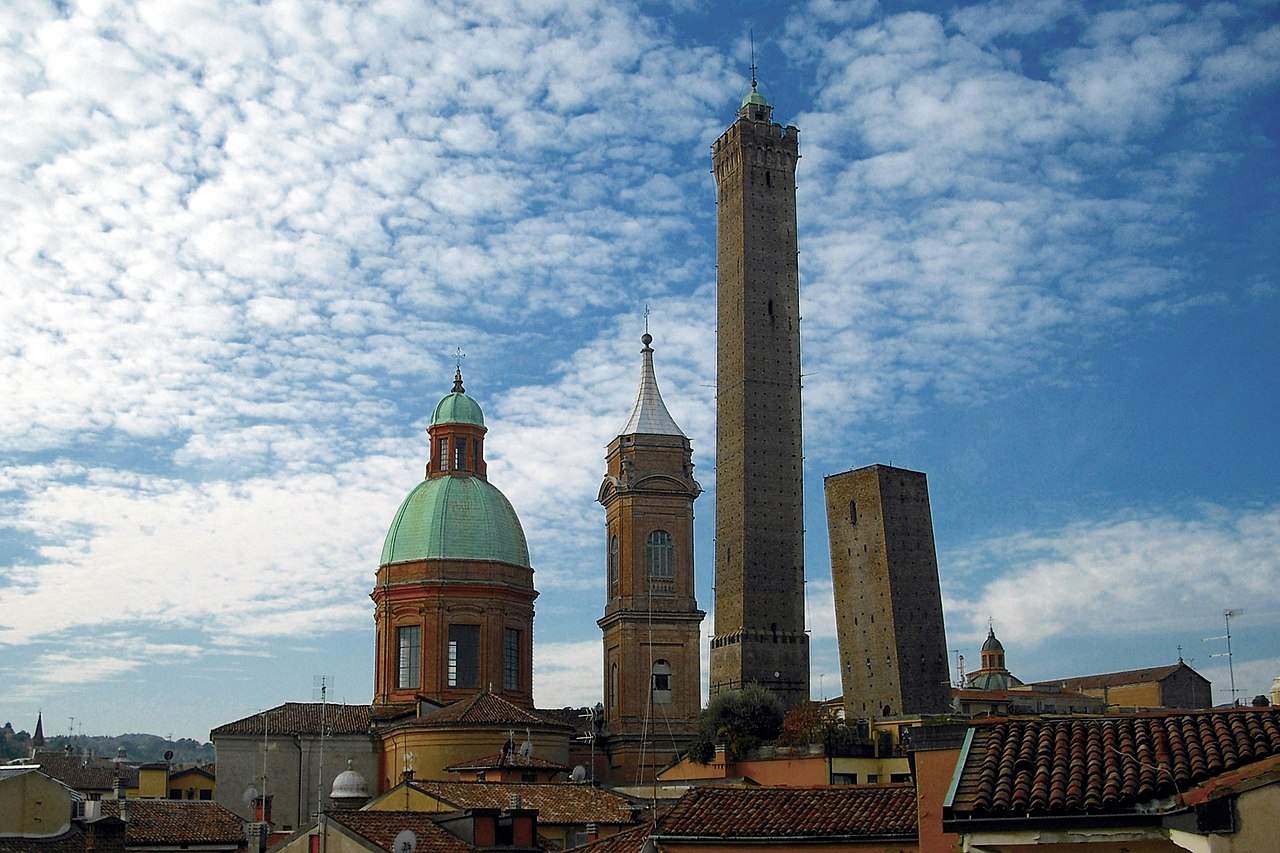Bologna, Garisenda alarm, anomalous oscillations: triggers city council plan
In Bologna there is alarm for the Garisenda Tower, which together with the Asinelli Tower is a symbol of the city. The monitoring to which the monument is subjected has in fact detected some anomalous oscillations, which were immediately reported to the Superintendence of Bologna last October 13. The ordinance was signed by Mayor Matteo Lepore on the recommendation of the Superintendency, which had deployed sensors to measure the changes in position, detecting a rocking that made officials suspicious, and they immediately requested further investigations by closing the area.
Built in the late 11th and early 12th centuries by the Garisendi family, the Garisenda Tower, between Via San Vitale and Strada Maggiore, is one of the symbols of Bologna along with the nearby Asinelli Tower. And although the Tower of Pisa is far more famous (and more visited) precisely because of its slope, the Bolognese tower is actually more sloping than the Pisan tower (but it is less well known and therefore less visited): in fact, the slope is 4 degrees, as opposed to 3.9 degrees for the Pisa tower, and is due to a subsidence of the ground during its construction. Originally the Tower was about 60 meters high, but precisely because of a similar risk of collapse it was “cut off” (and in fact is also called that) until it was lowered to 48 meters in height (the Asinelli Tower reaches 100 meters) in the second half of the 14th century. It is currently owned by the City of Bologna to which it was donated by Baron Raimondo Franchetti.
Unlike the one in Pisa, the ’mozza’ tower is made of bricks, and the problem of the basement has been the subject of the care of the Bolognese on several occasions: in 1871 this basement was made of selenite, and the heart of the problem would be the very center of the basement (the “sack”) composed of mortar, chunks of terracotta blocks and river pebbles. Selenite is indeed a material a durable and waterproof material but over time the mortar in the center has dissolved creating a void called precisely the “sack.” The municipality has also recently intervened by setting up steel chains hooked to the ground encircling the tower (2019) and last year an operation was done to fill the sack with material to fill it.
Now, as a precaution, the area around the Garisenda has been closed to traffic following discussions with the superintendency, the prefect and the provincial Committee for Public Order and Safety. The fence, which will last at least until Oct. 27, is for precautionary purposes and serves to allow experts to make new analyses of the situation and the state of preservation, of course, but in the city the mere idea that it might come down stirs up tempers and controversy of all kinds (there has been no shortage of criticism of the movement of any vehicle including buses by identifying traffic vibrations as the cause of the tower’s changed layout). It must be said, as anticipated, that already since the construction there were structural failures and the characteristics of the ground were not the optimal ones. For the same reason, the inclination changed with a vertex projection of 3.22 and an angle of 4 degrees.
Mayor however tried to be reassuring: there has been a debate on the data within the Garisenda’s technical-scientific committee, formed in 2018, but while a final report is still lacking, the first citizen let it be known that a civil protection plan is already ready in case of need, and that a meeting has already been held with Superintendent Francesca Tomba and Undersecretary for Culture Lucia Borgonzoni, and to date there would be no risk of collapse, although there is a need for interventions (the mayor spoke of “restoration” and “maintenance”). Less reassuring, however, was Undersecretary Vittorio Sgarbi, who wrote on his Facebook page this afternoon, “Tomorrow morning at 11:00 I will be in Bologna for an inspection of the two towers; the Garisenda is at risk of collapse. The Ministry will guarantee its support to make it safe.”
Lepore has mandated the council to set up a committee for the restoration of the Garisenda, which is to result from the final evaluations of the technical-scientific committee, and which will be in charge of managing the restoration of the monument, which is a municipal responsibility. The working group that will have to identify the profiles of the experts to be submitted to the mayor for the constitution of the committee, which will be set up later this week, the municipality announced. Raffaela Bruni, leading the working group, will assume the position of coordinator of the committee. “I will seek the best possible professionalism, nationally and internationally,” the mayor said. “I want to reassure the city that on this we will not look anyone in the face and we will look for everyone who can help us. It is not necessarily the case that this committee will be composed of the same professors who make up the scientific and technical committee. This is something that we will obviously evaluate. Just as it’s not necessarily that we will use the resources that the superintendence has requested through the Pnrr call, also because it’s a call, so we don’t know yet by November whether these resources will be there. But we will guarantee, as we always do, as a municipal administration, the resources that will be needed. We have no problems from this point of view. Should substantial resources be needed, the City has all the backs to be able to tackle, even on its own, the restoration of the Garisenda. Clearly, if there is a contribution, we will welcome it. And this restoration committee will also have the task of asking for the collaboration of donors, also because we will probably be able to use the Art bonus, and we will be able to carry out initiatives like those we have already done for the restoration of the Neptune fountain.”
Meanwhile, monitoring will continue throughout the week, and until October 27 there will still be traffic restrictions affecting the area of Piazza di Porta Ravegnana, resulting in changes to traffic, both private and public. The Asinelli Tower will also be closed as a precaution. The company that will be in charge of securing the tower has also been chosen: it is the company Fagioli, already active in highly complex interventions such as the righting and re-floating of the Costa Concordia, which sank on Giglio Island, and the reconstruction of the Morandi Bridge in Genoa. Fagioli S.p.A. is a world-leading engineering company in the transportation, handling and special lifting of mega structures, as well as shipments for petrochemical plants, with headquarters in Sant’Ilario d’Enza (Reggio Emilia) and operating subsidiaries in the USA, Canada, UAE, India, Singapore and Australia. In recent years, Fagioli has also been called upon to intervene in several national emergency situations being able to act quickly by virtue of the company’s in-house capabilities in the design, fabrication, immediate availability and installation of modular steel macro safeguard structures, including those to stabilize the wreck of the ship Concordia and those to secure the Polcevera Viaduct (known as Ponte Morandi) after the deck collapse.
All that remains is to await the technical results to understand how anomalous these oscillations are and how to intervene on the Garisenda to preserve it. A tower that was mentioned by Dante Alighieri twice, once in the Divine Comedy and before that with a sonnet all about her, in 1287.
Image: the Towers of Bologna, the Garisenda is the one on the right. Photo: Wikimedia/GianlucaB
 |
| Bologna, Garisenda alarm, anomalous oscillations: triggers city council plan |
Warning: the translation into English of the original Italian article was created using automatic tools. We undertake to review all articles, but we do not guarantee the total absence of inaccuracies in the translation due to the program. You can find the original by clicking on the ITA button. If you find any mistake,please contact us.





























